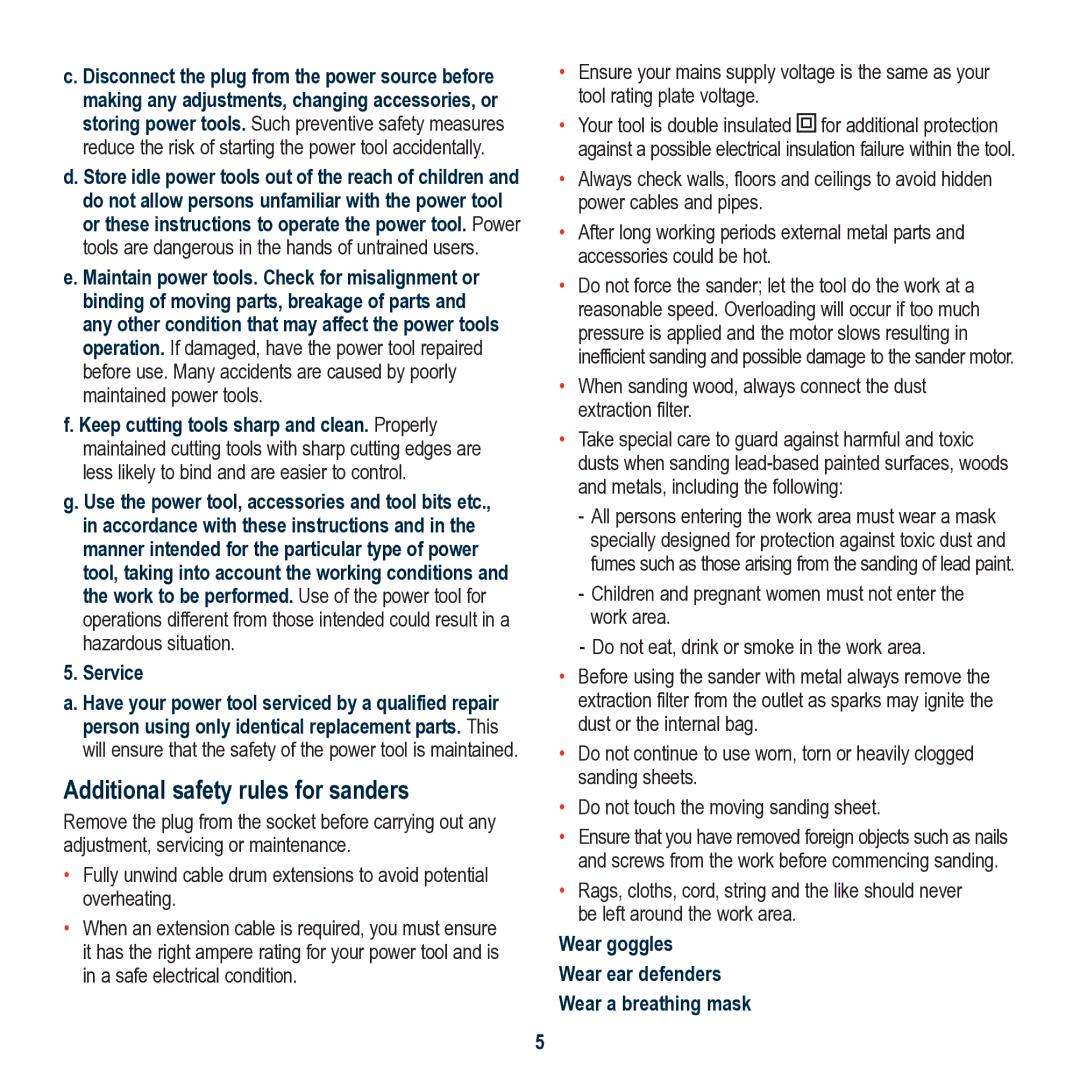c. Disconnect the plug from the power source before making any adjustments, changing accessories, or storing power tools. Such preventive safety measures reduce the risk of starting the power tool accidentally.
d. Store idle power tools out of the reach of children and do not allow persons unfamiliar with the power tool or these instructions to operate the power tool. Power
tools are dangerous in the hands of untrained users.
e. Maintain power tools. Check for misalignment or binding of moving parts, breakage of parts and any other condition that may affect the power tools operation. If damaged, have the power tool repaired before use. Many accidents are caused by poorly maintained power tools.
f. Keep cutting tools sharp and clean. Properly maintained cutting tools with sharp cutting edges are less likely to bind and are easier to control.
g. Use the power tool, accessories and tool bits etc., in accordance with these instructions and in the manner intended for the particular type of power tool, taking into account the working conditions and the work to be performed. Use of the power tool for operations different from those intended could result in a hazardous situation.
5. Service
a. Have your power tool serviced by a qualified repair person using only identical replacement parts. This
will ensure that the safety of the power tool is maintained.
Additional safety rules for sanders
Remove the plug from the socket before carrying out any adjustment, servicing or maintenance.
•Fully unwind cable drum extensions to avoid potential overheating.
•When an extension cable is required, you must ensure it has the right ampere rating for your power tool and is in a safe electrical condition.
•Ensure your mains supply voltage is the same as your tool rating plate voltage.
•Your tool is double insulated ![]() for additional protection against a possible electrical insulation failure within the tool.
for additional protection against a possible electrical insulation failure within the tool.
•Always check walls, floors and ceilings to avoid hidden power cables and pipes.
•After long working periods external metal parts and accessories could be hot.
•Do not force the sander; let the tool do the work at a reasonable speed. Overloading will occur if too much pressure is applied and the motor slows resulting in inefficient sanding and possible damage to the sander motor.
•When sanding wood, always connect the dust extraction filter.
•Take special care to guard against harmful and toxic dusts when sanding
-All persons entering the work area must wear a mask specially designed for protection against toxic dust and fumes such as those arising from the sanding of lead paint.
-Children and pregnant women must not enter the work area.
-Do not eat, drink or smoke in the work area.
•Before using the sander with metal always remove the extraction filter from the outlet as sparks may ignite the dust or the internal bag.
•Do not continue to use worn, torn or heavily clogged sanding sheets.
•Do not touch the moving sanding sheet.
•Ensure that you have removed foreign objects such as nails and screws from the work before commencing sanding.
•Rags, cloths, cord, string and the like should never be left around the work area.
Wear goggles
Wear ear defenders
Wear a breathing mask
5
